Interview: Atlas of Worlds Expansion Reshapes Path of Exile's Endgame
If you thought Path of Exile's last content update, Prophecy, shook things up, you're in for some serious world-shaking this time around. Atlas of Worlds, the new expansion for PoE, goes live on Sept. 2 and fundamentally changes how players will approach the game at high levels while creating tons of options for advanced players of Grinding Gear Games' popular ARPG.
As with our Prophecy preview, I scored a chunk of time with PoE's Lead Developer Chris Wilson to talk about everything that's going into Atlas of Worlds – and it's a lot. While the core gameplay of Path of Exile – find stuff, kill it, get its loot – remains unchanged, the exact nature of how you get to it will undergo some major changes in just a few weeks.
Before I get into the content, let's talk a little about the performance improvements PoE is undergoing. Multithreading the game engine “will use all the cores of the CPU a lot better than we previously did,” Wilson said. The performance gains are notable during big fights, with lots of enemies and effects on the screen, and especially important in emerging regions like Brazil and China.
Working on the mainland China version of the game “takes about half of my day,” Wilson said. “No exploding corpses!” More European languages are also part of the plan, even though players in many parts of the world – Wilson called out the German PoE community – are content to play the English-language version in their home countries.
All right, enough of the technical talk... let's get to the killin'!
The end is the beginning
The expansion's focus is very strongly on the endgame experience, which Wilson defined as being what comes after players complete the game's story content, which only takes a few dozen hours. As Wilson explained, the vast majority of PoE's playtime is logged in the endgame – you know, like every MMO, ever – and GGG wanted to inject some story flavor into that content so as not to make it appear like too much of a repetitive, meaningless grind – unlike nearly every MMO, ever.
“We wanted to raise the quality of the endgame to the same quality level as the story content of the game by adding its own lore and story elements to it and by having better progression mechanisms,” Wilson explained. Rather than just adding new content to low-level areas that players might encounter when they start over in a league, GGG wanted to add content that would “give them specific stuff to do right now.”
It's an ARPG staple to simply offer multiple difficulty levels to the base game, but Wilson and his team wanted to do something different this time around. Players already had some control over the difficulty of their maps, and those maps were procedurally generated, but there was nothing to them besides being random spaces where you could kill stuff and get loot.
Map mayhem
Enter the Atlas of Worlds, a chart of 100 linked maps, grouped together by theme, such as desert, city, or spider-infested forest. The maps are similar to the maps already in the game, but spruced up a bit. “The artists have really surpassed their previous work,” Wilson said. “They've done a lot to make these new areas really lush and vibrant.” I viewed short gameplay videos of several of the maps and they do indeed look beautiful, in that semi-apocalyptic Path of Exile way, with colorful (but not overly so) landscapes and, of course, tons of hostile critters looking to suck off your face. “People go nuts over these mountain ledges,” Wilson said about one of the map types, mildly bemused by how popular it was.
"Content re-use is baked into the DNA of our studio. We had to make sure that every piece of content was re-used as many times as we could get away with, but in interesting ways."
Wilson's favorite was the Estuary, a “fire and ice” map with lava on one side and an ocean on the other. Naturally, the boss of the map uses both types of elemental attacks, and partway through the fight, he splits into two golems, one fire and one ice, and then recombines once those are beaten. Wilson himself had nothing to do with the boss design and was pleasantly surprised that the team used the fire/ice theme to come up with an innovative boss encounter using the game's existing tools and not requiring an abundance of development time. Other maps required little to no additional art assets.
“Content re-use is baked into the DNA of our studio,” Wilson said, as a way to explain how the team can use innovative methods to recombine content ideas in new ways to help keep things fresh and interesting rapidly enough to keep up with players' voracious appetites. “When we started, we were literally a couple of guys in a garage spending our life's savings on this. We had to make sure that every piece of content was re-used as many times as we could get away with, but in interesting ways.”
This doesn't mean that everything is re-used. Atlas of Worlds has 19 new boss encounters to challenge (and frustrate) players, as well as plenty of new unique items, which might have to share the spotlight with some of their “only” rare brethren; more on that later.
The farther you progress in the Atlas of Worlds, the higher the tiers of the maps and the more difficult they become. Each time you complete a map, you'll get a +1% drop rate bonus on other maps, giving you a reason to do more than just rush to the center.
And what's at the center? There are four maps in the middle, each with a powerful mythological guardians: a hydra, phoenix, chimera, and minotaur. Behind them likes the shadowy mastermind engineering the entire affair, the Shaper. He dwells in the center of the Atlas in a tier 16 world – the maximum possible difficulty – that only the most dedicated players will reach.
That doesn't mean that only the super-hardcore will be able to enjoy Atlas of Worlds. Wilson feels that a big problem with getting people to attempt harder difficulty levels was the lack of motivation and the arbitrary process of progression in the endgame. With a more interesting goal to work toward, he's confident that players will be more interested in testing themselves with harder challenges. “We're hoping to see a lot more players reach the top content,” he said. Even if they don't play the content themselves, Wilson expressed that he was happy to see players view high-end content on Twitch. “They're still an engaged community member enjoying a product we made, just in a slightly different way.”
Get to the good stuff
OK, but it's still about the loot, right? That's right, and the Atlas of Worlds lends itself to loot themed around certain areas. For instance, Wilson showed me an example of a Bone Helmet that boosted minion damage that could only be found only in the graveyard area of the Atlas, thus giving players with a specific build a reason to clear out certain maps, and revisit them if desired.
"We want there to be multiple different things that people see as the endgame."
Players will rarely find Shaper's Orbs, which can upgrade a map by five levels, increasing the challenge and also the loot rewards. There are also Cartographer's Sextants, which are centered on a map node and draw a circle on the Atlas itself, granting additional random properties to the maps contained within and its denizens. So if you have a necromantic character, you might choose to apply these map upgrades to the graveyard area for greater risk and the possibility of greater loot that suits your build.
“We want there to be multiple different things that people see as the endgame,” Wilson said. “I'm sure there will be a place on the Atlas that people will upgrade and will feel more rewarding than the actual boss fight because of the way the balance works out.” That's fine with Wilson, who likes that players will be able to choose what they define as Path of Exile's “endgame.” As with most loot, nearly everything, including the key fragments you get for beating the four central bosses, is tradeable, giving players the option to do the content they want to and buy or sell things they need or have an excess of.
Messin' with essences
Even with all the emphasis on the endgame experience in Atlas of Worlds, Wilson and his team managed to find time to insert a new league, the Essence Challenge League. “I was initially wanting the team to put less effort into it because there's the big Atlas of Worlds expansion coming with it,” Wilson said. “But the challenge league ran away from itself in terms of the amount of stuff that gradually snowballed in there.” About 80% of players participate in leagues, Wilson told me.
When you start up in the new league, you'll find groups of monsters, frozen in place near an essence. If you choose to “activate” the monsters, you'll get one of seven effects related to that essence to make the fight more difficult. With all the different essences, there are a total of over 100 possible challenges. If you don't think you're up for it – like if there's a fire essence and you aren't equipped to deal with fire damage – you can simply run right past the monsters and move on to the next group. Defeat the monsters and you get a crafting item related to the essence that was trapping them.
I'll be honest when I say that it was at this point, when Wilson was talking about combining essences, using them to upgrade normal items to rares, and so on, that my brain started to spin. PoE's got a very complex, very customizable itemization system that I'm not nearly experienced enough with to comment on with any kind of expertise.
Suffice it to say that Wilson's aware of the issues players face when trying to “max out” their items, and he and his team do what they can to modify that experience with new content to address player concerns and give them reasons to want that new and shiny loot, while not making “lesser” loot totally obsolete. A major emphasis of this challenge league, Wilson says with a chuckle, is to “make rares great again,” owing to the fact that rare items, with their random stats, are viewed as far less desirable than uniques and their pre-determined stats.
Through it all, the goal is more choice for the player. If you can puzzle your way through the myriad options, you can dial up your difficulty to match your skill level, with loot to match. This notion exists through nearly all phases of the Atlas of Worlds expansion and helps Grinding Gear Games to create interesting and challenging content without requiring a huge outlay of resources. It's a process other MMO game studios would do well to study and emulate.
Related Articles
About the Author

Jason Winter is a veteran gaming journalist, he brings a wide range of experience to MMOBomb, including two years with Beckett Media where he served as the editor of the leading gaming magazine Massive Online Gamer. He has also written professionally for several gaming websites.
More Stories by Jason WinterRead Next
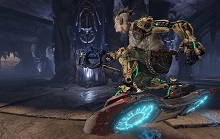
Quake Champions is id Software's and Bethesda SoftWorks' upcoming team arena shooter.
You May Enjoy

The First Contact Day Celebration begins tomorrow.

I feel like many fans would have probably just ended up disappointed.

Pre-registrations are open and players have already hit some of the milestones.
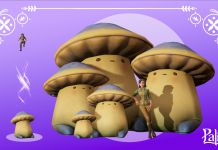
No, this doesn't mark an "official" launch.
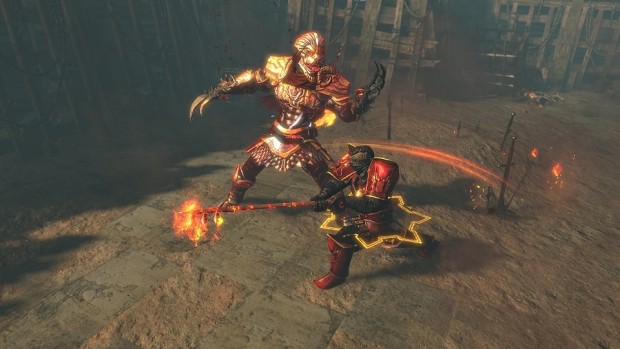
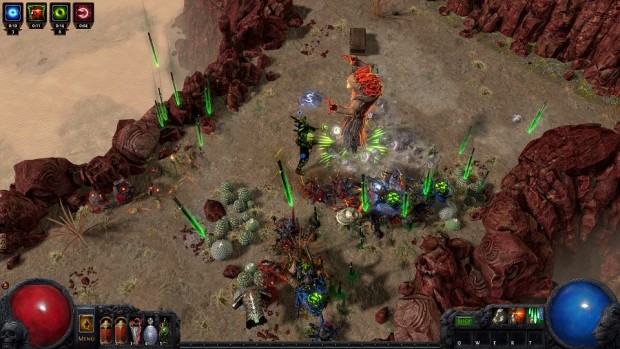
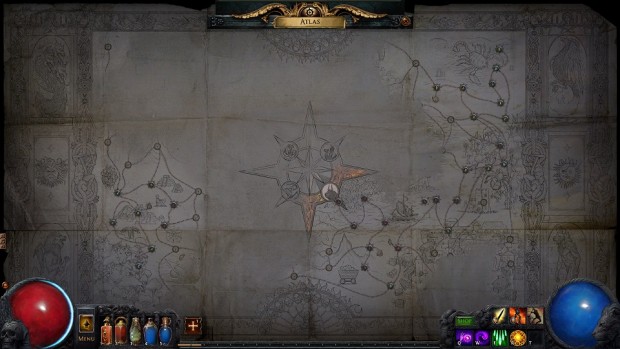
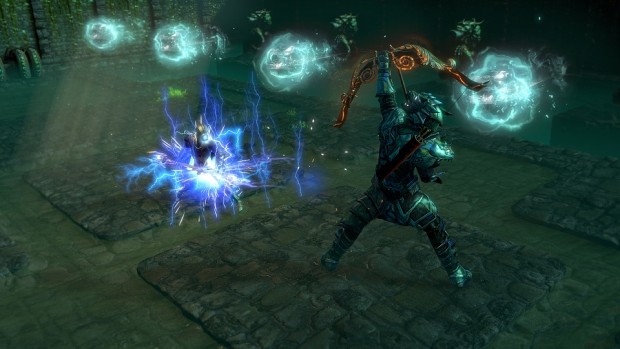
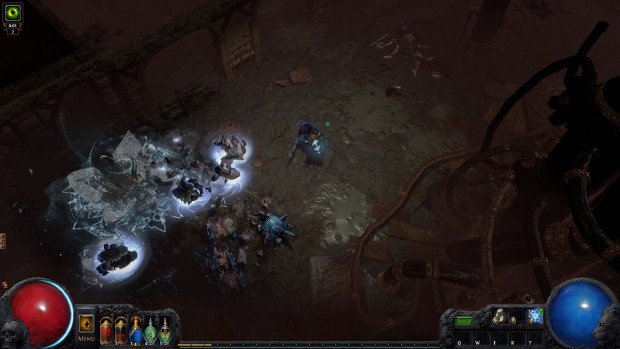
Inb4 " it will kill the purpose of maps ", which isn't true.
The new league....looks ok, some of those mods look excellent pity it ruins the other rolls...don't think i'll be playing that one though